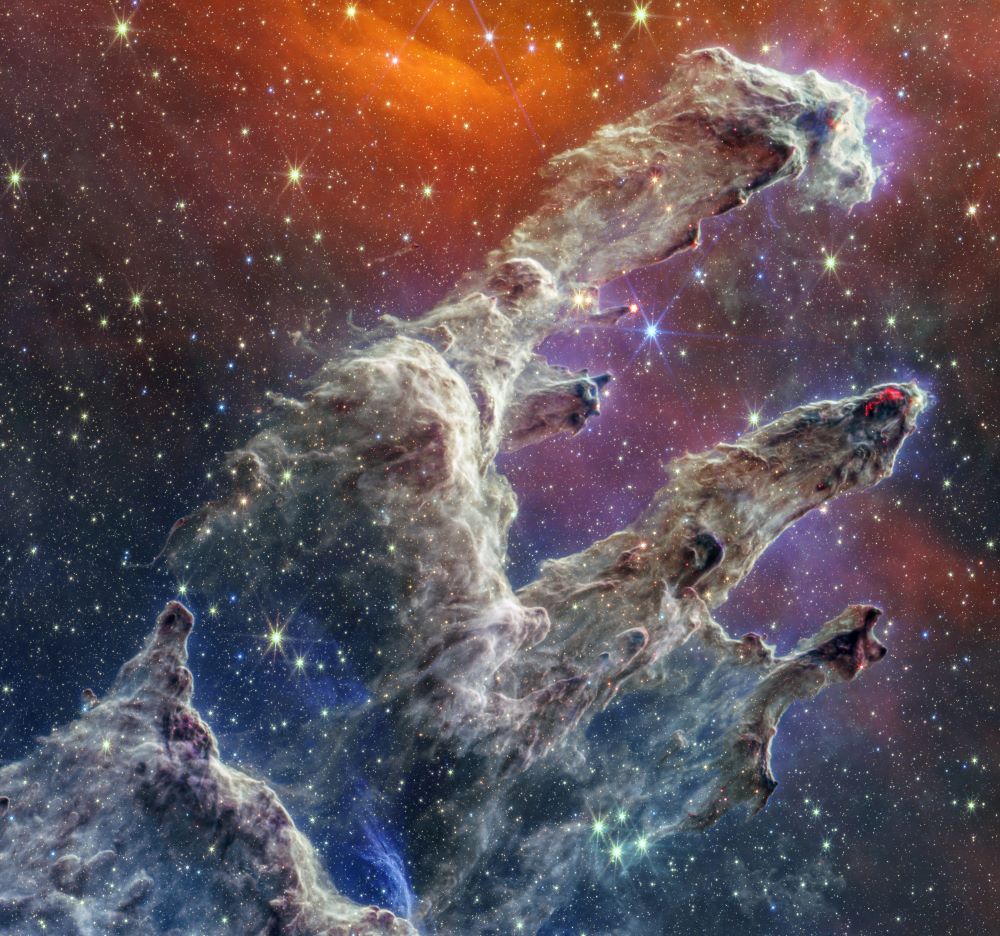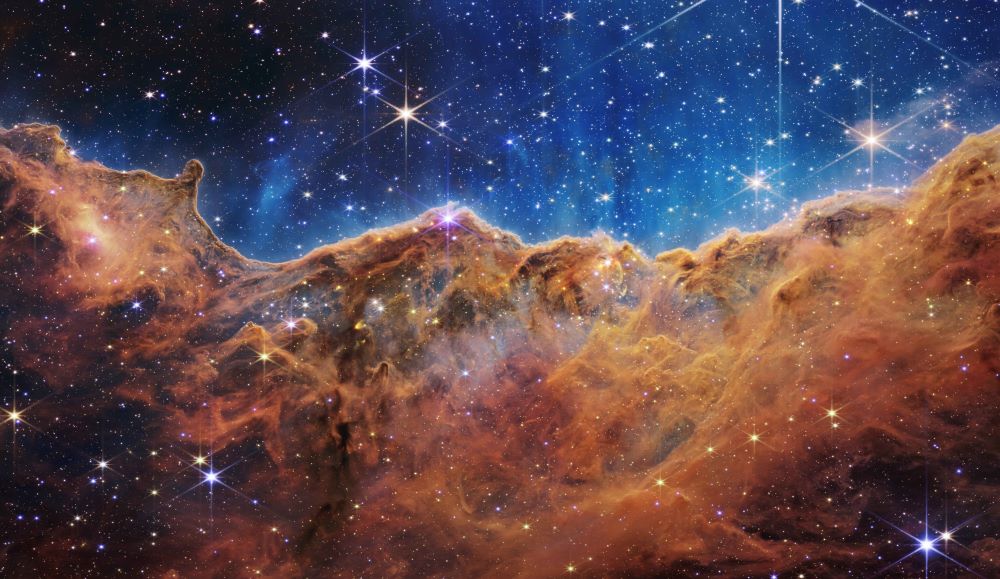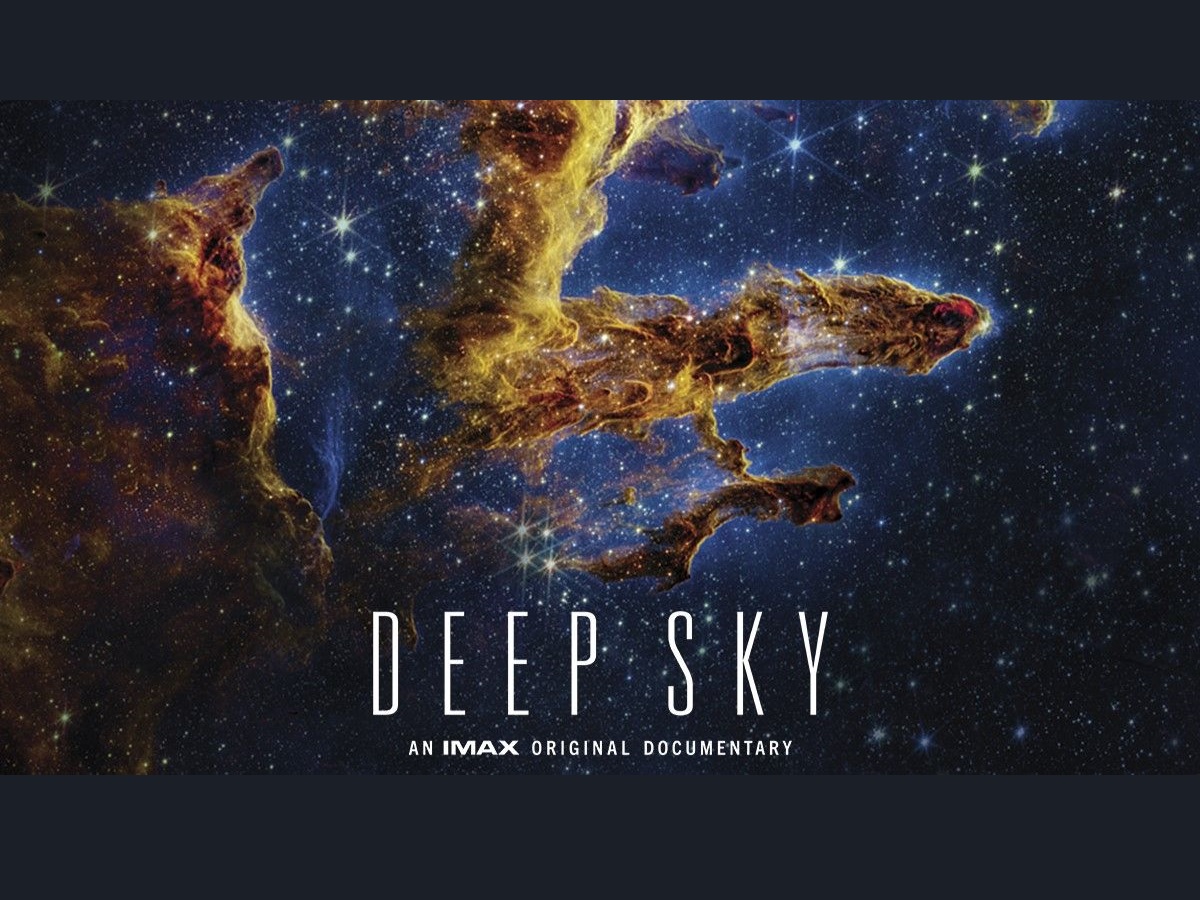A few years ago, I was able to attend a Dark Sky Party sponsored by the telescope manufacturer where my son worked. Out in an open field, a number of amateur as well as professional astronomers set up their telescopes to view the wonders of the universe. Just with the naked eye I could view the expanse of the Milky Way galaxy of which our solar system is a part. As I gazed through telescopes at distant stars and galaxies, I was amazed at how the multitudes of celestial bodies. However terrestrial telescopes are hindered by having to view the skies through the Earth’s atmosphere. When the Hubble space telescope was launched into low earth orbit in 1990, it gave astronomers a much clearer and complete view of the galaxy. However, after the James Webb Space Telescope (JWST) was launched in 2021 and arrived at its position a million miles away from earth about a month later, even more wonders of the universe were revealed to the people of Earth. Now you can not only learn more about the endeavor to build and deploy the JWST, but also view some of its incredible images on a massive IMAX screen with Deep Sky.

What Is Deep Sky?
Deep Sky brings the awe-inspiring images captured by NASA’s Webb Telescope to IMAX — taking audiences on a journey to the beginning of time and space, to never-before-seen cosmic landscapes, and to recently discovered exoplanets, planets around other stars. Directed by Oscar-nominated filmmaker Nathaniel Kahn and narrated by Oscar-nominated actress Michelle Williams, Deep Sky follows the high-stakes global mission to build JWST and to launch it into orbit one-million miles from Earth, in an attempt to answer questions that have haunted us since the beginning of time: Where did we come from? How did the universe begin? Are we alone? 13 billion years in the making, Deep Sky reveals the universe as we have never seen it before; immersing audiences in the stunning pictures beamed back to earth by NASA’s new telescope — and capturing their vast beauty at a scale that can only be experienced on the giant IMAX screen. Deep Sky will release at over 300 North American IMAX theaters for a limited 1-week run beginning April 19, 2024. Tickets are available now online.

Why You Should See Deep Sky
I had the opportunity to view an early screening of Deep Sky with a fellow science teacher from my high school. I have previously seen some of the images captured by the JWST which is an infrared telescope. However, it was incredible to sit and view them on the huge IMAX screen. The film covers the scientists and the challenges in not only building the space telescope but in launching it into space and deploying it at a location more than four times the distance from the Earth to the Moon. It is amazing how many things had to go perfect for this to be a success. The scientists interviewed describe their experiences both with building the telescope as well as receiving images from it. One of the things I found fascinating was how they scientists described an area in which the JWST captured an image. If you were to hold a grain of sand at arms length while looking up at the sky, that was the tiny portion of the sky that was captured. That image contained not just lots of stars, but dozens of galaxies, each with billions of stars of their own. Some of that light travelled 13 billion years so in some ways the JWST is a time machine able to view into the past and the early history of the universe. JWST is not only confirming scientific theories such as those by Einstein, but also changing theories about the age of the universe as astronomers are seeing complete galaxies billions of years ago when the expected to see only the formation of stars.

I thoroughly enjoying watching Deep Sky. It was entertaining as well as educational. The film is 39 minutes in length and left me wanting more. If you have an interest in astronomy, then you really need to see this film. Even those who don’t know much about the universe will enjoy Deep Sky since it is also a story about the people who conceived and built the JWST and put it into its distant location. I highly recommend seeing Deep Sky in an IMAX theater. It will only be showing for 1 week, so don’t delay or you will miss it.
Be sure to see Deep Sky when it releases for its limited 1-week run on April 19, 2024 at an IMAX theatre near you. Visit the website for more information on locations and tickets.
Here is a trailer for Deep Sky.

